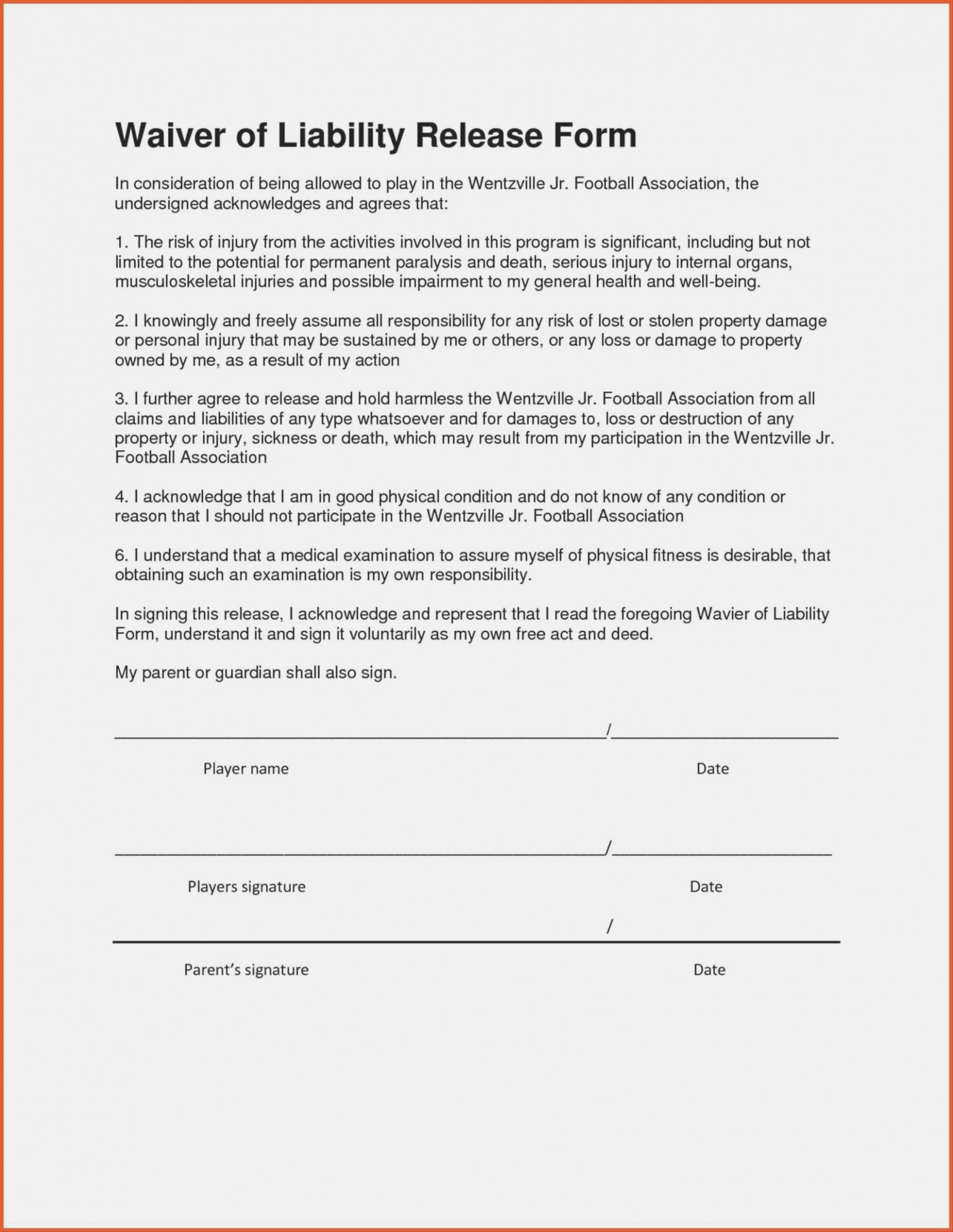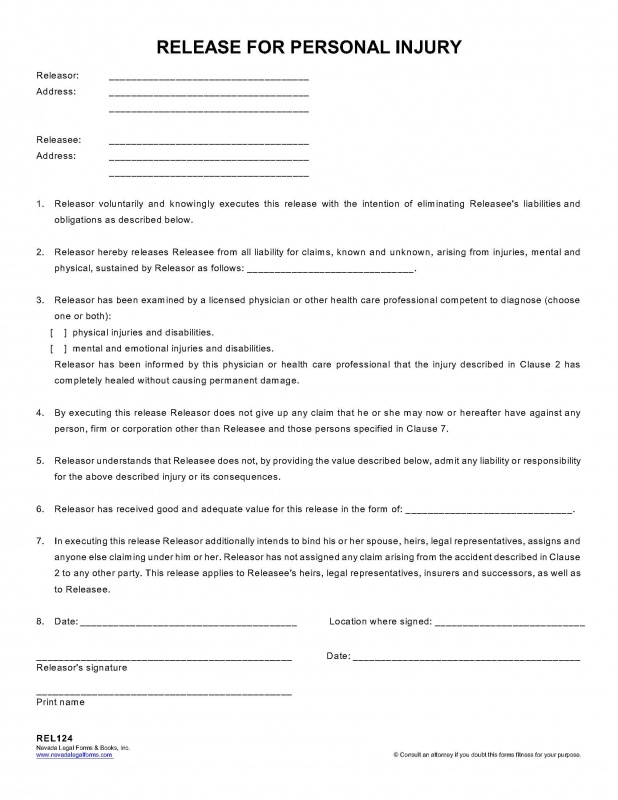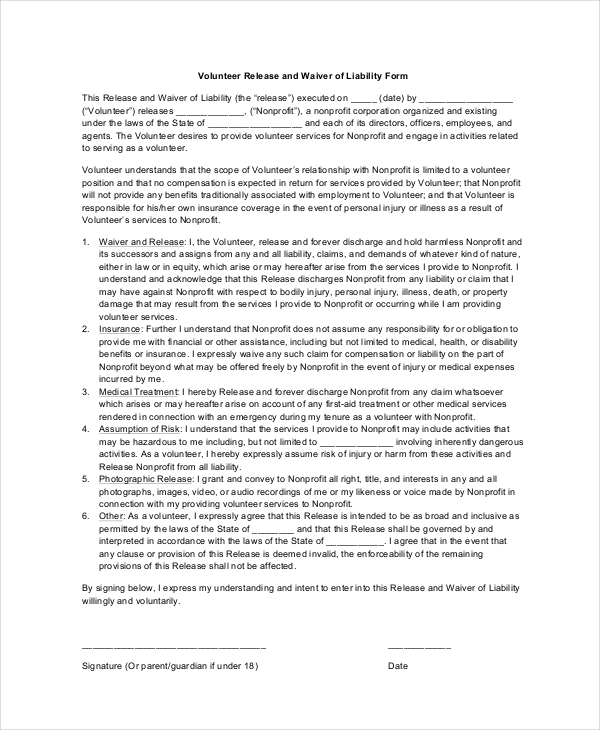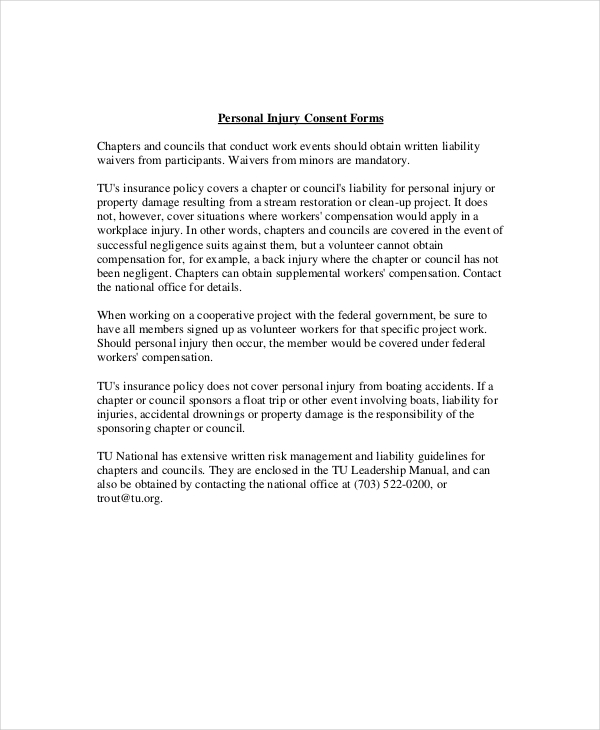Hey there, folks! Today, we’re going to talk about a topic that some of you might find quite intriguing – personal injury waiver forms. Now, I know what you’re thinking – “Huh? How can a waiver form be intriguing?” But trust me, it’s an important subject to be aware of, especially if you want to protect yourself from potential legal issues.
First, What Exactly Is a Personal Injury Waiver Form?
A personal injury waiver form, often referred to as a liability waiver, is a legal document that helps protect individuals or organizations from being held liable for any injuries or damages that may occur during a particular activity or event. It’s essentially a way to transfer the responsibility of unforeseen accidents or injuries from one party to another.
 Now, let’s dive deeper into the world of personal injury waiver forms and explore their significance.
Now, let’s dive deeper into the world of personal injury waiver forms and explore their significance.
Why Should You Care About Personal Injury Waiver Forms?
 Imagine you’re planning to participate in an adventurous activity like rock climbing or skydiving. Before embarking on these thrilling experiences, the activity organizers will often require you to sign a personal injury waiver form. By doing so, you acknowledge the risks involved and agree not to hold them responsible for any accidents or injuries that may occur.
Imagine you’re planning to participate in an adventurous activity like rock climbing or skydiving. Before embarking on these thrilling experiences, the activity organizers will often require you to sign a personal injury waiver form. By doing so, you acknowledge the risks involved and agree not to hold them responsible for any accidents or injuries that may occur.
So, why should you care about these forms? Well, if you don’t sign a personal injury waiver form before engaging in such activities, you may be putting yourself at risk. In legal terms, you could be held personally liable for any injuries or damages that may occur while participating.
 Understanding the Content of a Personal Injury Waiver Form
Understanding the Content of a Personal Injury Waiver Form
Personal injury waiver forms typically contain several crucial elements to ensure they are legally binding and provide adequate protection to all parties involved. Although the exact content may vary, here are some common components:
- Release of Liability: This section outlines the participant’s agreement to release the activity organizer from any legal claims or consequences in case of an injury or accident.
- Assumption of Risk: Here, the participant acknowledges that they are fully aware of the potential risks associated with the activity and willingly accept those risks.
- Indemnification: This clause states that the participant agrees to indemnify and hold harmless the activity organizer in the event of any claims or lawsuits arising from the activity.
Remember, personal injury waiver forms are legally binding documents, and it’s essential to carefully read and understand all the terms before signing them.
 Final Thoughts
Final Thoughts
Personal injury waiver forms may not be the most exciting topic, but they play a crucial role in protecting both individuals and organizations from potential legal troubles. Whether you’re engaging in an adrenaline-pumping adventure or participating in a simple recreational activity, it’s always a smart move to sign a personal injury waiver form.
By understanding the content and implications of these forms, you can make informed decisions and ensure your safety. So, before you embark on your next thrilling experience, take a moment to read and sign that personal injury waiver form. Stay safe and have fun!
 Sources:
Sources:
- 40 Personal Injury Waiver form | Desalas Template
- Personal Injury Waiver Form - emmamcintyrephotography.com
- Liability Waiver Form Template Free ~ Addictionary
- 28 Printable Personal Injury Waiver Form Templates - Fillable Samples
- Personal Injury Waiver form Awesome Free Printable Liability form form